
Beata is a genus of jumping spiders that was first described by George Peckham & Elizabeth Peckham in 1895.

Breda is a genus of jumping spiders that was first described by George Peckham & Elizabeth Peckham in 1894.

Chapoda is a genus of jumping spiders that was first described by George Peckham & Elizabeth Peckham in 1896.
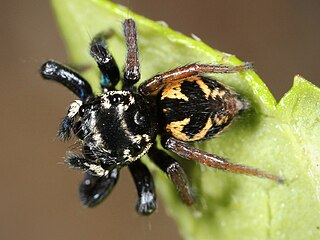
Corythalia is a genus of jumping spiders that was first described by Carl Ludwig Koch in 1850. The genus is distributed throughout most of the Western Hemisphere. Species of this genus are found in The Americas.
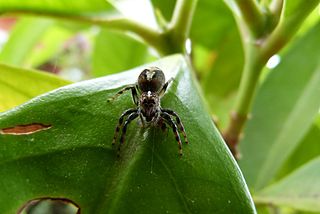
Frigga is a genus of jumping spiders that was first described by Carl Ludwig Koch in 1850. The name is derived from Frigga, a Norse goddess.
Gastromicans is a genus of jumping spiders that was first described by Cândido Firmino de Mello-Leitão in 1917.

Lyssomanes is a spider genus of the family Salticidae, ranging from South and Central America, up to the southern United States.
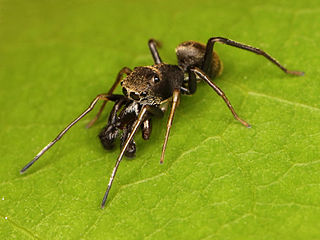
Martella is a genus of ant mimicking jumping spiders that was first described by George and Elizabeth Peckham in 1892. Species of this genus are found in South America and Central America.

Metaphidippus is a genus of jumping spiders that was first described by Frederick Octavius Pickard-Cambridge in 1901. The name is combined from Ancient Greek μετά "after, beside" and the salticid genus Phidippus.

Pachomius is a genus of jumping spiders that was first described by George and Elizabeth Peckham in 1896. Uspachia was merged into genus Romitia in 2007, and all nine species were merged into Pachomius in 2015. The name is derived from Pachomius, the founder of cenobitic monasticism.

Paraphidippus is a genus of jumping spiders that was first described by Frederick Octavius Pickard-Cambridge in 1901. The name is a combination of the Ancient Greek "para" (παρά), meaning "alongside", and the salticid genus Phidippus.

Phiale is a genus of jumping spiders that was first described by Carl Ludwig Koch in 1846. P. albovittata has been considered a junior synonym of Freya perelegans since 2006.
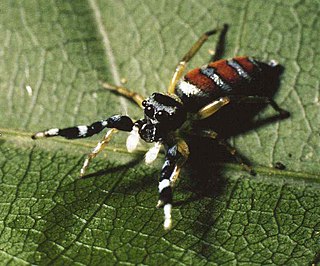
Psecas is a genus of jumping spiders that was first described by Carl Ludwig Koch in 1850.

Sidusa is a genus of jumping spiders that was first described by George and Elizabeth Peckham in 1895.

Synemosyna is a genus of ant mimicking jumping spiders that was first described by Nicholas Marcellus Hentz in 1846.

Micrathena, known as spiny orbweavers, is a genus of orb-weaver spiders first described by Carl Jakob Sundevall in 1833. Micrathena contains more than a hundred species, most of them Neotropical woodland-dwelling species. The name is derived from the Greek "micro", meaning "small", and the goddess Athena.

The Dendryphantina are a subtribe of jumping spiders that occur mainly in the New World. The subtribe was first defined by Anton Menge in 1879 as Dendryphantidae. Females of the subtribe generally show paired spots on the abdomen, and the males often have enlarged chelicerae. Females in this subtribe typically have S-shaped epigynal openings.

Colonus is a genus of spiders in the jumping spider family, Salticidae. Colonus species are endemic to North and South America, ranging from New York to Argentina. All members of the genus have two pairs of bulbous spines on the ventral side of the first tibiae. The function of these spines is unknown. Colonus was declared a junior synonym of Thiodina by Eugène Simon in 1903, but this was reversed by Bustamante, Maddison, and Ruiz in 2015.
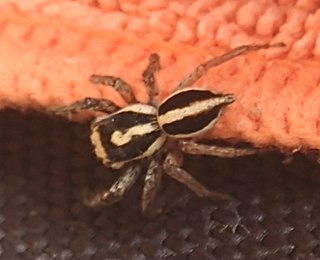
Leptofreya is a genus of spiders in the family Salticidae. It was first described in 2015 by G. B. Edwards. It is found in the Americas from the United States to Brazil.


















